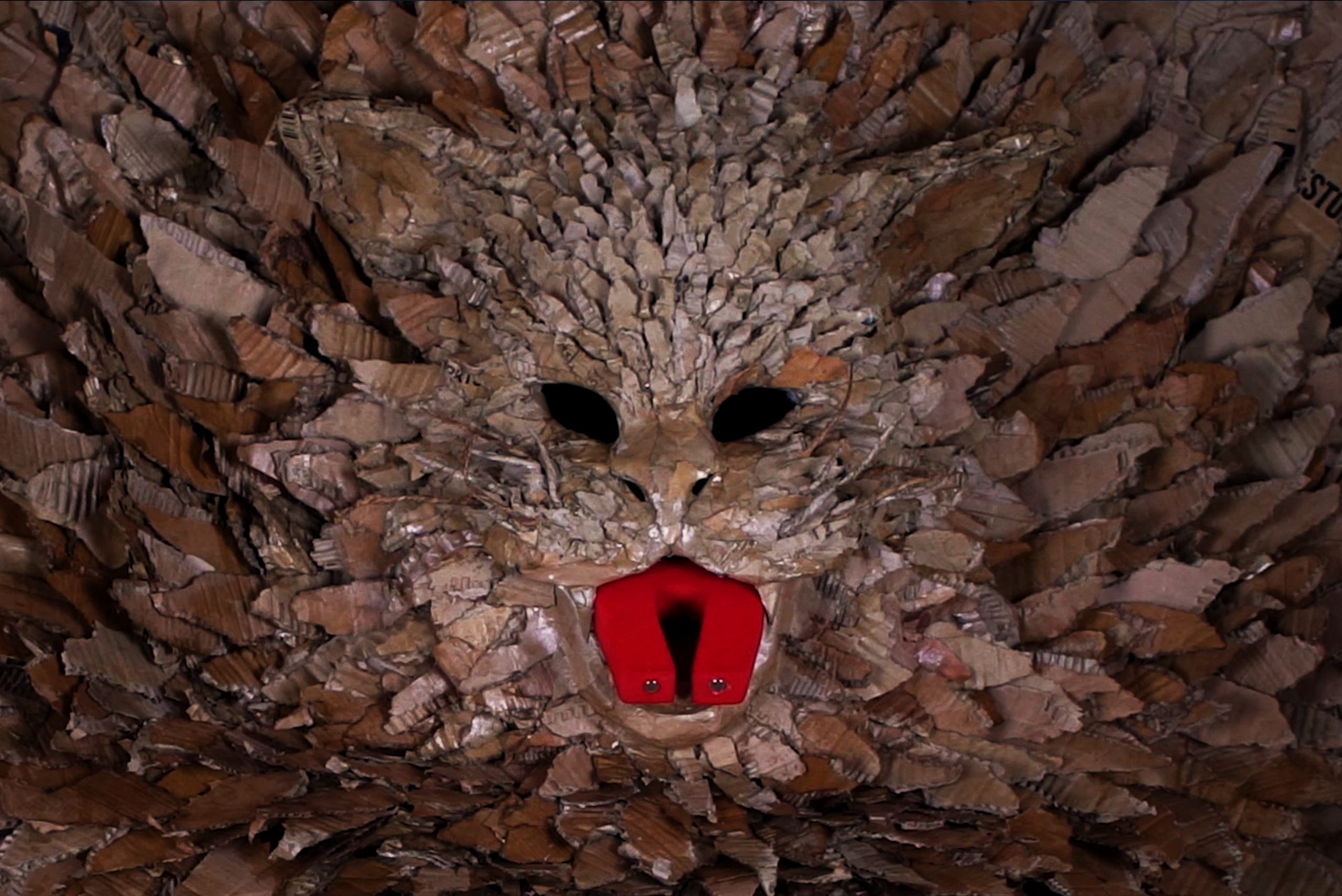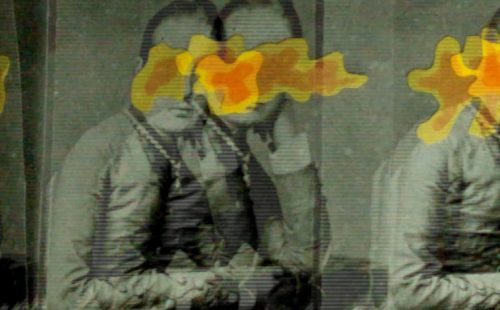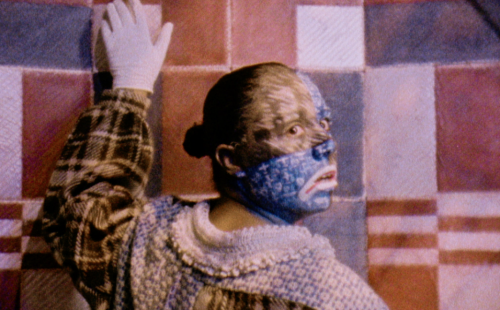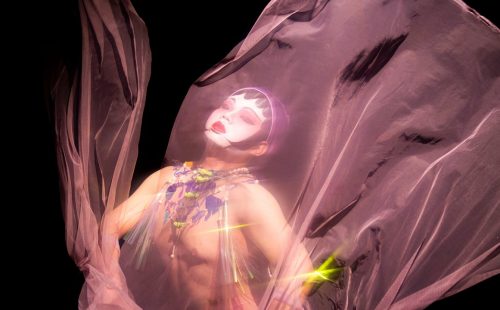Programme of work:
- Gaby Sahhar, Truth and Kinship, 2020, 9:26 mins
- Sam Grant, Final Poetic, 2020, 1:49 mins
- River Cao, River is My Hometown, 2021, 8:05 mins
- Aoibheann Greenan, Dingbox, 2020, 5 min
- Katayoun Jalilipour, Soosk, 2021, 12 mins
- Roxy Rezvany, Wifi Rider, 2020, 13 mins
Further down the page you can watch the films individually.
Selected 11 brings together some of the best work from early career film and video artists from across the UK in a vibrant programme of recent artists’ moving image. The nominators for this year’s programme of Selected (and the artists shortlisted for the Jarman Award in 2020) are: Michelle Williams Gamaker, Hannah Quinlan & Rosie Hastings, Jenn Nkiru, Project Art Works, Larissa Sansour and Andrea Luka Zimmerman.
The artists for the 11th programme of Selected are: River Cao, Sam Grant, Aoibheann Greenan, Katayoun Jalilipour, Roxy Rezvany and Gaby Sahhar.
Screening and exhibitions of programme online
Selected 11 will be showing across the UK with partners throughout 23-29 August 2021, including online with Nottingham Contemporary, Spike Island (Bristol), Phoenix (Leicester) and a live screening at Fabrica Gallery (Brighton) on 2 September. The programme will be available on our site during 23-29 August.
In conversation with artists with Nottingham Contemporary on 25 August
An in conversation with artists Aoibheann Greenan, Katayoun Jalilipour and Roxy Rezvany talking with Ian Haydn Smith (editor of Curzon Magazine) will launch online on 25 August at 6:30pm. Watch the talk by clicking here.
In conversation with artists with Spike Island on 26 August
An in conversation with artists River Cao, Sam Grant and Gaby Sahhar talking with Ian Haydn Smith (editor of Curzon Magazine) will take place live online on 26 August at 6pm. Watch the talk by clicking here.
Book a ticket for Fabrica screening on 2 Sept
Screening at Fabrica Gallery, Brighton on 2 September at 6:30pm. Tickets are £3. To book a ticket for Fabrica, click here. Address: Fabrica Gallery, 40 Duke Street, Brighton BN1 1AG. How to get to Fabrica.
Find out more about the artists and their work on our Meet the artists page by clicking here.
Below you can watch individual works from the Selected 11 programme.
Gaby Sahhar, Truth and Kinship, 2020
Truth and Kinship is shot in Tower Hamlets, Canary Wharf and Isle of Dogs. Steeped in history as one of the largest ports for trade in the UK this is a landscape determined by extreme wealth divides, aggressive property development and finance. Narrated by a disembodied, genderless voice that recounts memories speaking of pain, longing and desire we watch three young people from diverse backgrounds navigate this hostile space in their quest for social mobility. The main protagonist, a suited white male uses his privilege to explore his sexual identity, fetishising queerness at the expense of others. Limited by his homophobia he resumes a life of heteronormativity and access to capital having delved to far into queer subculture. The film considers the different daily realities the characters encounter in public space. Hierarchical and in a state of perpetual mutation Truth and Kinship questions how the city adapts to serve the capitalist male identity to the detriment of others.
Sam Grant, Final Poetic, 2020
Shot over three days in Norfolk, Final Poetic is an impressionistic moving image piece of the British north. It aims to reframe the image of the natural world away from the literality of its geography and into the subjective experience of rural England. Beyond the realms of objective representation there is an internal space that we project outward onto the canvas of the world. It is the ambition of this film to portray just one of those potentially limitless impressions.
River Cao, River is My Hometown, 2021
River is My Hometown is an elegy, an elegy for Cao.
River is My Hometown is driven by a strong sense of loss. When Cao faces the loss of his hometown following the disaster of the flood and the question of his identity, he tries to build his own language space to re-translate his subjective emotions. The traditional mourning ceremony of his hometown “plead for water” becomes a key clue — an entrance into the self-language space. It substantiates his sad thoughts and returns him as a revenant to a hometown that transcends the geographic concept.
Aoibheann Greenan, Dingbox, 2020
Dingbox by Aoibheann Greenan draws on the internet phenomenon of unboxing videos, pushing the format’s haptic qualities to elicit its strangely seductive power. Dingbox performs the unboxing dynamic as burlesque, stretching the narrative structure to its logical extreme. The film loops indefinitely, mimicking the cycle of production-consumption built on hidden labour and discarded waste.
Katayoun Jalilipour, Soosk, 2021
Soosk explores a queer utopian rewriting of a traditional Iranian children’s story named ‘Khale Sooske’, which originally follows a female cockroach’s hunt for a husband whilst normalising domestic violence. This retelling, ‘Soosk’, follows the journey of a cockroach who survives gender-based violence and finds a queer safe haven with the help of a non-binary divine being. Very importantly, Soosk revisits the trauma that sexist and abusive rhetoric in children’s stories contribute to, especially for queer people. Soosk is a fictional fantasy about queer euphoria, and the freedom queerness offers from the struggles under hetero-patriarchy.
Roxy Rezvany, Wifi Rider, 2020
Life is lonely for young Palestinian, Shukri. He spends his days on the internet, immersed in a world where Western popstars preach self-love and unity, and where he can forget the lack of acceptance he faces in everyday life. But a life dreaming of paradise abroad does not bode well for a teenager stuck in East Jerusalem. What he desperately wants is to connect with others like him, who feel caught between an occupation, globalisation, and the universal growing pains that come with adulthood. In this 16mm documentary film, we follow Shukri from a childhood in East Jerusalem to moving to the hillside apartments of Amman, Jordan and the sandy shores of the Dead Sea. We discover the origins of his life as the Wifi Rider, and how he channelled his frustrations into art on the internet.
Produced by videoclub and Film London Artists’ Moving Image Network (FLAMIN). Supported by Arts Council England and Film London.
Film London Artists’ Moving Image Network
Film London Artists’ Moving Image Network (FLAMIN) was launched in 2005 as a one-stop resource to provide artists working in the moving image with access to funding, guidance and development opportunities. Through unique commissioning funds, FLAMIN has commissioned over 150 productions, and supported the careers of countless other artists with programmes of one-to-one advice sessions, residencies and workshops.








